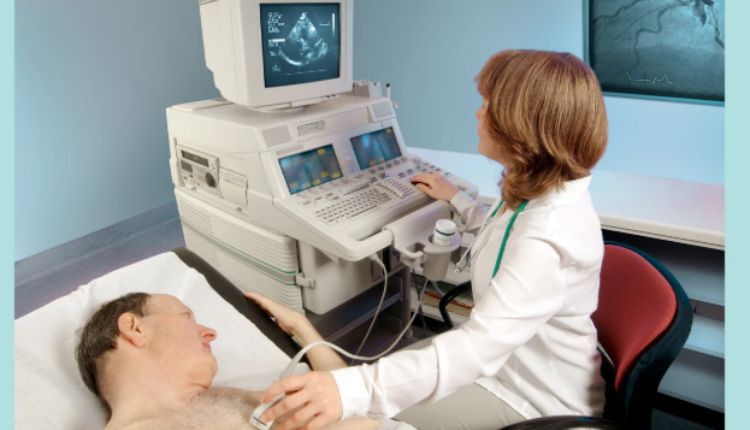An echocardiogram is a vital diagnostic test that provides detailed images of your heart’s structure and function. Whether you have been referred for an echocardiogram due to symptoms, routine screening, or ongoing heart monitoring, understanding what to expect can help ease any anxiety.
This guide explains each process stage in detail, from preparation to results.
What Is an Echocardiogram?
An echocardiogram is a non-invasive test that uses ultrasound waves to create images of the heart. It helps doctors assess heart size, shape, pumping ability, and blood flow. This test commonly detects heart conditions, including valve diseases, congenital heart defects, and cardiomyopathies.
Why Might You Need an Echocardiogram?
Your doctor may recommend an echocardiogram if you experience:
- Shortness of breath
- Chest pain
- Irregular heartbeat
- Swelling in the legs or feet
- High blood pressure
It is also used to monitor existing heart conditions or evaluate the effectiveness of treatments.
Types of Echocardiograms
There are different types of echocardiogram tests, each suited for specific diagnostic purposes. Here’s a look at some of the prominent types:
1. Transthoracic Echocardiogram (TTE)
This is the most common type. A handheld transducer is placed on your chest to capture heart images through the ribs.
2. Transoesophageal Echocardiogram (TOE)
This procedure inserts a thin probe into the oesophagus to obtain detailed images of the heart, especially the back structures.
3. Stress Echocardiogram
This test assesses how the heart functions under stress through exercise or medication that increases heart rate.
4. Doppler Echocardiogram
This type focuses on measuring blood flow and detecting heart valve or artery abnormalities.
How to Prepare for an Echocardiogram
Proper preparation ensures the echocardiogram provides accurate and clear images of your heart. While most echocardiograms require minimal preparation, some specific types may have dietary and medication restrictions.
1. Follow Your Doctor’s Instructions
Your doctor will provide specific instructions based on the type of echocardiogram you are having.
2. Eating and Drinking Guidelines
- For a Transthoracic Echocardiogram: No dietary restrictions are required.
- For a Transoesophageal Echocardiogram: Fasting for at least six hours before the procedure is necessary.
3. Medication Considerations
Inform your doctor about any medications you are taking, as some may need to be adjusted before the test.
4. Wear Comfortable Clothing
Loose-fitting clothing makes it easier to access the chest area for the procedure.
Step-by-Step Guide to an Echocardiogram
Understanding the step-by-step process of an echocardiogram can help you feel more comfortable and prepared for the test. The procedure varies slightly depending on the type of echocardiogram you are undergoing, but the general steps remain the same.
Here’s a breakdown of what you can expect before, during, and after the test.
Step 1: Arriving at the Clinic
- Upon arrival, you will check in and provide your medical history. A technician will guide you to the examination room.
Step 2: Preparing for the Test
- You may be asked to change into a hospital gown.
- Electrodes (small adhesive patches) may be placed on your chest to monitor your heart’s electrical activity.
- A gel is applied to the chest to help the transducer make better contact with the skin.
Step 3: Conducting the Echocardiogram
For a Transthoracic Echocardiogram:
- The technician moves the transducer across your chest while ultrasound waves create real-time heart images.
- You may be asked to hold your breath briefly for clearer images.
- The procedure usually takes 30-45 minutes.
For a Transoesophageal Echocardiogram:
- You will receive a sedative to help you relax.
- A thin probe is inserted into your throat to capture high-quality heart images.
- The test takes around 45-60 minutes.
For a Stress Echocardiogram:
- You will either exercise on a treadmill or receive a medication that increases heart rate.
- The echocardiogram is performed before and after the stress test to compare heart function.
- This test lasts about 60 minutes.
Step 4: After the Echocardiogram
- You can resume normal activities immediately if you have had a transthoracic echocardiogram.
- If you had a transoesophageal echocardiogram, you may need time for the sedative to wear off and should arrange for someone to drive you home.
- Your doctor will review the results and discuss any further tests or treatments if necessary.
Understanding Your Echocardiogram Results
Your doctor will explain the echocardiogram findings, which may include:
- Heart size and shape: Enlarged chambers may indicate underlying conditions.
- Heart function: Measures how well the heart pumps blood.
- Valve health: Detects valve narrowing, leakage, or infections.
- Blood flow: Identifies blocked or narrowed arteries.
If abnormalities are detected, further tests or treatments may be required.
Risks and Limitations of an Echocardiogram
Echocardiograms are generally safe and non-invasive. However, there are some considerations:
- Discomfort: You may feel slight pressure from the transducer.
- Sedation effects: If a transoesophageal echocardiogram is performed, temporary throat discomfort or drowsiness may occur.
- Image quality: Factors like obesity or lung disease may limit image clarity, requiring additional imaging tests.
How to Book an Echocardiogram in Australia
In Australia, you may need a referral from your doctor to book an echocardiogram test at a hospital or diagnostic clinic. Medicare covers medically necessary echocardiograms, but private health insurance policies may also offer coverage.
Conclusion
An echocardiogram is a critical test for assessing heart health. By understanding what to expect, you can approach the test with confidence. Whether it’s a routine check-up or an investigation of symptoms, this procedure provides essential insights into your heart’s condition. If you have any concerns, speak to your doctor about the best options for your situation.
















